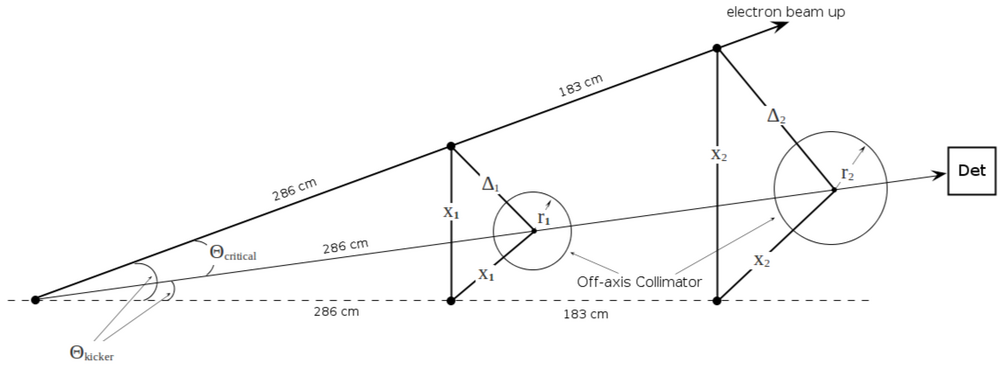Difference between revisions of "Geometry (25 MeV LINAC exit port)"
Jump to navigation
Jump to search
| Line 12: | Line 12: | ||
<math>\frac{1}{\sqrt{2}}\ (286+183)\ \tan\left(\frac{0.511}{E_{min}}\right) + | <math>\frac{1}{\sqrt{2}}\ (286+183)\ \tan\left(\frac{0.511}{E_{min}}\right) + | ||
| − | \frac{1}{2}\ (286+183)\ \tan\left(\frac{1}{2}\ \frac{0.511}{E_{min}}\right) = | + | \frac{1}{2}\ (286+183)\ \tan\left(\frac{1}{2}\ \frac{0.511}{E_{min}}\right) = 8.73 \Rightarrow E_{min} = 26.3\ MeV </math> |
Solving for <math>E_{min}</math> | Solving for <math>E_{min}</math> | ||
Revision as of 03:38, 13 June 2010
Minimum accelerator energy to run experiment
The minimum energy of accelerator (MeV) is limited by fitting the collimator () into the hole ()
Assuming the collimator diameter is and the hole radius is R = 8.73 cm:
Solving for
25 MeV geometry
critical angle
kicker angle
geometry ()
collimator center position
(wall 1)
(wall 2)
collimator diameter
(wall 1)
(wall 2)
collimator critical angle
:
minimal distance from the wall ()
geometry ()
collimator center position
(wall 1)
(wall 2)
collimator diameter
(wall 1)
(wall 2)
collimator critical angle
:
minimal distance from the wall ()
Funny pictures...
how it looks 1 (, box 3"x4" and then pipe 4")
File:Vacuum pipe collimator .png
how it looks 2 (, box 3"x4" and then pipe 4")
File:Vacuum pipe collimator .png
